 Scallops Are Easier to Prepare Than You Might Think!
Scallops Are Easier to Prepare Than You Might Think!
It’s hard to beat a good scallop. Whether alone, bacon-wrapped, on a shishkebab, or prepared in any number of local & regional variations, scallops tend to be so rich & decadent as to virtually be the dessert of the sea. However, they can be a bit tricky to make truly delicious at home, leading many to have the impression that scallops are the kind of thing that you can only get at a restaurant if you really want to enjoy them. Turns out, it’s easier to buy, clean, and prepare them than you may expect.
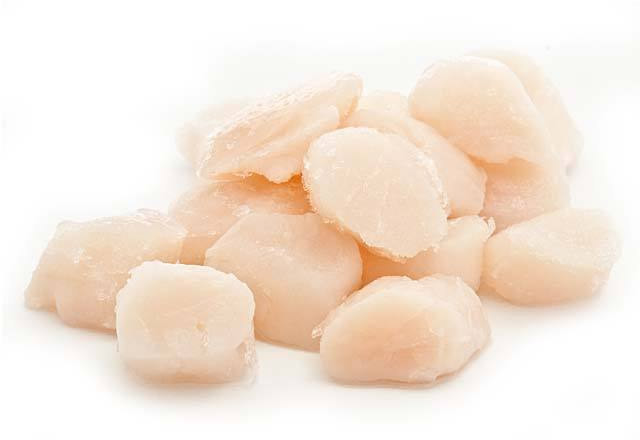 Buying Scallops
Buying Scallops
Scallops you’ll typically find in stores are wet-packed sea scallops. Occasionally they’ll be found dry-packed or diver-caught, which tends to reflect in better taste and a higher price. Finally, there’s also the coastal variety called bay scallops, which are smaller in size, sweeter, and more delicate.
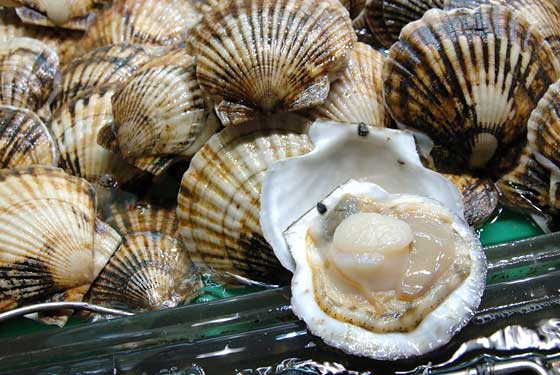 Bay Scallops in the Raw
Bay Scallops in the Raw
Whichever kind you buy, look for scallops that are a uniform pearly-white color with firm, slightly moist flesh. They shouldn’t be either completely dry or dripping with moisture. Don’t spend your money on scallops that look mangled or shredded. This shows mishandling and can also sometimes indicate lack of freshness. Also, we wouldn’t bother with frozen scallops as their texture and flavor isn’t nearly as good.
Although the amount you should buy depends on the appetites and setting of those being served, you’ll want to have a minimum of a little over a pound for every 3 people. It’s generally enough that everyone will get as much as they’d like to enjoy, and may even result in a few leftovers.
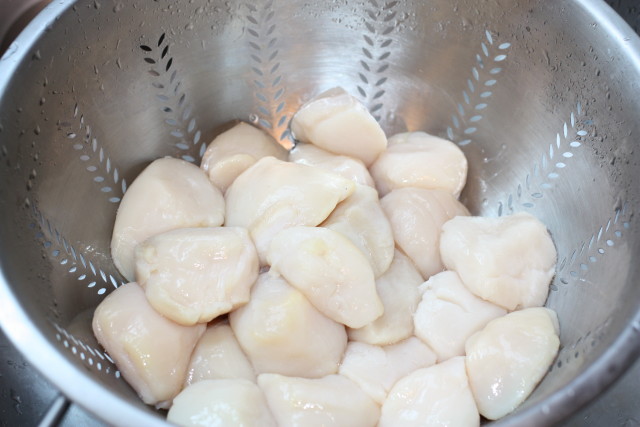 Cleaning Scallops
Cleaning Scallops
As preparing shellfish goes, scallops are a snap! Generally, they just need to be put under running water and pat-dried. Check over the scallops as you’re handling them and remove the side-muscle if you find any still attached. Be sure to check the scallops for any still-attached side-muscles and remove them- they’re not usually a party favorite.
This side-muscle is a little rectangular strip of flexible tissue on the side of the scallop. It will feel tougher than the rest of the scallop’s meat, and these muscle fibers also run opposite the fleshy fibers on the scallop itself. Just pinch and tear it away, and you’re done. If you can’t find them on every morsel, there’s a reason for that- it often gets removed as part of the harvesting process.
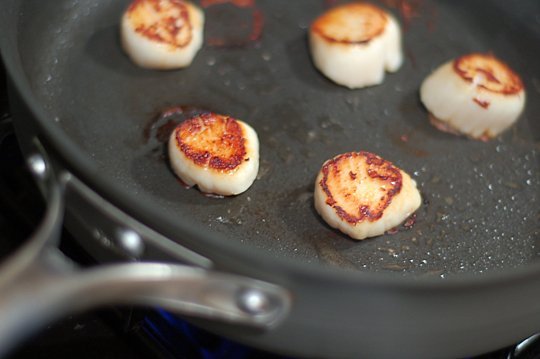 Preparing Scallops
Preparing Scallops
Scallops can be cooked in a wide variety of ways: seared, grilled, poached, or even raw when they’re fresh. As they tend to cook quickly and lose taste & texture rapidly when cooked too long, it is often advised to err on the side of undercooking them. Too much cooking, and this candy of the sea becomes less than a confection.
One great way to prepare scallops is to simply melt a little butter or olive oil in a skillet over medium-high heat and sear the scallops. Seared for a minute and a half or so per side, just enough to get a golden crust and barely cook them through. For a crispier crust, dry the scallops thoroughly before cooking and only salt at the last minute. Same goes for grilled scallops.
Ingredients
1 pound dry sea scallops, approximately 16
2 teaspoons unsalted butter
2 teaspoons olive oil
Kosher salt
Freshly ground black pepper
- Remove the small side muscle from the scallops, rinse with cold water and thoroughly pat dry.
- Add butter and oil to a saute pan that’s on high heat. Salt and pepper the scallops.
- After the fat begins to smoke, add the scallops gently while making sure they are not touching each other.
- Sear for 90 seconds per side. Scallops cooked this way should have a 1/4-inch golden crust on each side but still partially clear in center.
- Serving as immediately as possible is recommended.
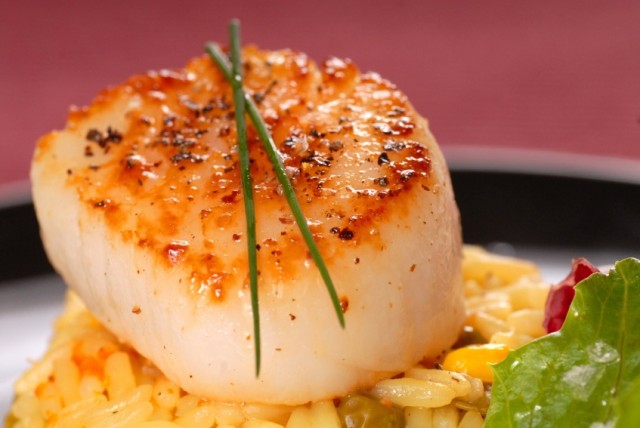 Boaters, Try This Recipe!
Boaters, Try This Recipe!








